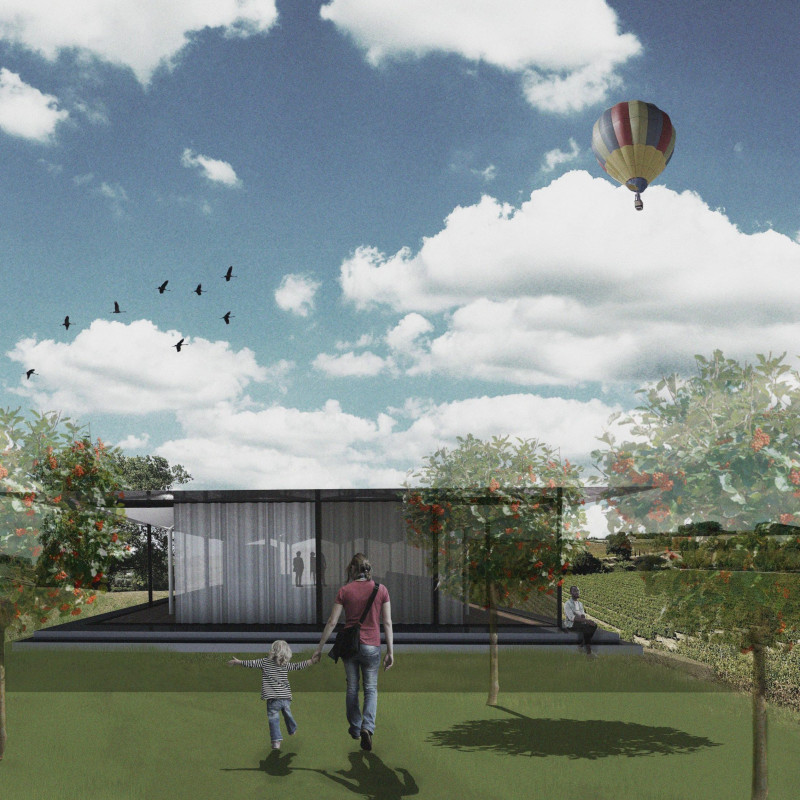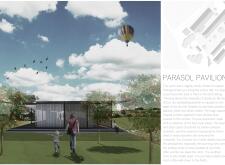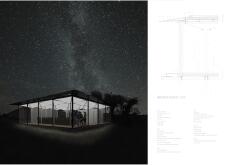5 key facts about this project
The Parasol Pavilion is located in the coastal region of Portugal, overlooking the vineyards of Quinta do Monte d'Oiro. Designed as a wine tasting venue, it emphasizes transparency and a connection to the natural landscape. The layout encourages interaction between the interior space and the outdoors, enhancing the overall visitor experience.
Structure and Layout
The pavilion features an arrangement of sixteen square-shaped parasol elements, which define the space while creating a neutral backdrop for activities. This configuration allows for flexibility and accommodates various gatherings within a single open area. A simple cubic structure houses necessary facilities, such as sanitary rooms and a counter, maintaining a clean and restrained aesthetic.
Interaction with Nature
A key aspect of the design is the use of floor-to-ceiling windows. These large openings invite ample natural light and provide uninterrupted views of the surrounding vineyards. The transparency fosters visual engagement and a sense of connection with the landscape. Additionally, sliding window segments allow the pavilion to open nearly completely, enhancing the indoor-outdoor experience.
Functional Design Elements
To enhance user comfort, the pavilion includes adjustable curtains that provide sun protection while allowing for personal preferences regarding shading and privacy. This attention to detail addresses varying weather conditions, contributing to the pavilion's overall adaptability. Inside, the use of parquet beech flooring adds warmth, and a heated screed improves functionality.
Material Considerations
The careful selection of materials reflects a commitment to sustainability and harmony with the environment. Insulation, especially XPS, combined with OSB sheets, improves thermal performance and energy efficiency. These choices not only support the building's structure but also create a sense of place that ties the architecture to the agricultural landscape.
The design encourages engagement with both the space and its surroundings, offering a welcoming environment that celebrates the relationship between wine tasting and the scenic vineyards.






















































